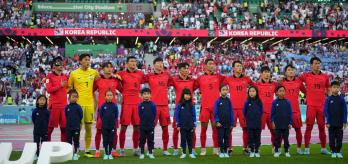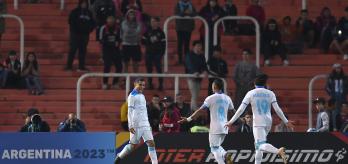Javier Lerga, who joined the Spanish Football Association (RFEF) in 2016, currently serves as the Spain women’s youth team coordinator and dof the women’s senior national team. His previous experience in a range of roles within football provided Lerga with the perfect grounding for his current position as coordinator. In this insightful interview, Lerga discusses several changes that have brought about improvements in the women’s football department at the Spanish FA. He explains how the introduction of new national-team age groups has had a positive impact on player training and development across the board, while also highlighting the benefits of having expanded the pool of coaching staff.
Good practice
-
Develop the competitive structure through the creation of U15 and U23 national teams
-
Increase the quantity and quality of coaching staff, including the appointment of psychologists and chaperones
-
Implement a mentoring scheme involving senior national-team players
Watch interview
Read summary
Part 1: Lerga’s footballing journey
In the first part of the interview, Lerga reflects on his journey in the game. He states that he has been a coach since the age of 20 and has always combined his work in football with roles in teaching and sports management. The Spaniard notes that the general overview of the game that he has acquired is of great benefit in his current role as coordinator of the Spain women’s youth teams.
Part 2: Creation of additional age groups
In the second section of the interview, Lerga explains what motivated the Spanish FA’s decision to introduce a further two age groups (U15 and U23) to the women’s national-team set-up. He notes that the U15 side was created to provide a competitive element for girls at younger ages with a view to providing continuity with the competitive environment already in place at U17 and U19 levels. Meanwhile, the U23 national team was set up to act as a stepping stone that reduces the step-up between the U19 side and the senior team.
Part 3: Scouting and talent ID process
Part three of the interview sees Lerga describe the scouting process adopted by the women’s football department and how Spanish football’s governing body divides player monitoring into three levels. The first level concerns players who compete in national competitions, with the Spanish FA tending to carry out club visits to monitor such players. The second level comprises players who play in regional leagues, where the RFEF relies heavily on club coaches to provide information on players and, depending on the feedback, may send staff to watch matches in person. Lerga comments that the third level, which is far less common, consists of youth players – particularly those at U12 level – and girls who compete in mixed‑gender football alongside boys.
Part 4: Coaching staff structural changes
In this section, Lerga highlights that up until 2018, the Spanish FA did not have a dedicated women’s football department. He notes that since its creation in that year, the department has become increasingly professional and now features a 12-strong team of coaches who work exclusively with the women’s national sides. In addition, another three staff members operate across both the men’s and women’s game, while a further six coaches are involved on a permanent but ad hoc basis in the players’ training journey. The Spain women’s youth team coordinator pays tribute to the commitment shown by RFEF President Luis Rubiales and other key figures at the association towards the women’s game, before explaining how the professionalisation of the department has enabled the Spanish FA to work with top-level professionals to enhance its operations in the areas of training and performance.
Part 5: Mentoring scheme
In the fifth section, Lerga discusses the mentoring scheme run by the women’s football department and states that it stems from the RFEF’s strategic plan to achieve sporting excellence. Although still in its infancy, Lerga speaks of the great pride that the department feels for the programme. The aim of the initiative is to expand the pool of women’s coaches and to enhance standards within the system. Another aspect of the mentoring scheme involves senior national-team players guiding their youth counterparts through their training journey. Senior players are asked to help the youngsters not only with football-related matters, but also with other challenges they may encounter in performing to the best of their ability, integrating into a group setting and dealing with the competitive pressures involved in the game.
Part 6: Role played by psychologists and chaperones
In the final section of the interview, Lerga highlights the important role played by psychologists and chaperones across the women’s football department. He explains that psychologists offer support with emotional aspects, and although their focus is primarily on the players, they are also on hand to assist staff members who may benefit from their support to perform their roles. Lerga concludes the interview by stating the importance of the newly introduced role of the chaperone, who not only offers academic assistance, but also organisational support. These staff members equip the players with the tools they need to overcome difficulties, while supporting them with any issues that may arise during national-team training camps.



















